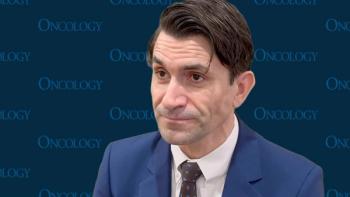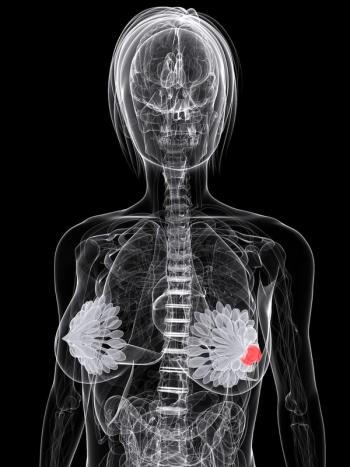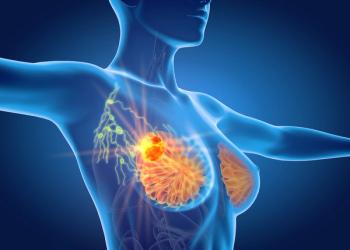
Oncology NEWS International
- Oncology NEWS International Vol 9 No 9
- Volume 9
- Issue 9
Antiangiogenesis Agents Aimed at Early-Stage Cancer
NEW ORLEANS-Antiangiogenesis drugs under development may find their greatest utility in early-stage cancer and in combination with other agents, Michael S. Gordon, MD, said at a symposium sponsored by Agouron Pharmaceuticals (La Jolla, Calif). The symposium, “Novel Mechanisms in the Future of Cancer Treatment,” was held in conjunction with the American Society of Clinical Oncology’s 36th Annual Meeting.
NEW ORLEANSAntiangiogenesis drugs under development may find their greatest utility in early-stage cancer and in combination with other agents, Michael S. Gordon, MD, said at a symposium sponsored by Agouron Pharmaceuticals (La Jolla, Calif). The symposium, Novel Mechanisms in the Future of Cancer Treatment, was held in conjunction with the American Society of Clinical Oncologys 36th Annual Meeting.
Dr. Gordon, of the University of Arizona College of Medicine, pointed out that the focus with antiangiogenesis agents is really not an issue of larger vessels present in tumors. We are focusing on tumor microvessels that are rapidly proliferating and emerging to feed and nourish new tumors.
The processes being targeted by such agents are found in wound healing, embryogenesis, tumor cell invasion, and the development of overt metastases, he said. Those processes are tightly regulated by pro- and antiangiogenic factors.
One proposed target for angiogenesis inhibitors is that of prolonging tumor dormancy. During dormancy, before the appearance of a macroscopic tumor, angiogenesis and apoptosis are in balance, and angiogenesis is insufficient for tumor progression.
A further goal would be to take a tumor in a growing proliferative phase and induce dormancyleading not to cytoreduction but to stabilization of the tumor and prolonged survival.
Dr. Gordon said that angiogenesis involves three steps:
Dissolution of the basement membrane (allowing extravasation of tumor cells and sprouting of microvessels from existing small vasculature).
Endothelial cell proliferation and migration (critical to the formation of new microvessels and microtubules).
Re-establishment of the basement membrane and vascular integrity.
In the initial phase, the capillary basement membrane is degraded by matrix metalloproteinases (MMPs), a family of enzymes also responsible for the remodeling of bone and soft tissue. The MMPs most directly involved in angiogenesis are MMP-2 and MMP-9 (gelatinase A and B, respectively).
This critical role of MMPs in the invasion of tumor cells suggests that inhibitory agents may impede the development of micrometastases, Dr. Gordon said.
He pointed out that preclinical single-agent models do not show significant antitumor responses but, rather, suggest a synergistic interaction between MMP inhibitors and chemotherapy or radiation therapy. The outlook for single-agent antiangiogenesis therapy as a significant cancer therapy is waning, he said.
The effect of MMPs and other agents being developed to influence vascular endothelial growth factor (VEGF) activity may be limited to those microvessels with rapidly proliferating cells. They may not have any effect on tumors that have an established vascular supply, Dr. Gordon said.
The viable strategy may be, therefore, to reduce tumor load with standard chemotherapy agents or radiation therapy and inhibit regrowth of the vascular endothelial component through antiangio-genesis agents. The ideal result would be disappearance of the tumor and the recapturing of tumor dormancy, he said.
Therapies combining angiogenic agents with chemotherapy or radiation therapyor combining several angiogenic agentshold promise for results superior to those obtainable with any of the components alone.
Prinomastat
Agouron Pharmaceuticals investigational MMP inhibitor prinomastat (AG3340) is currently being evaluated in several phase II trials, primarily in patients with early-stage disease, and in one phase III study of stage IIIB non-small-cell lung cancer (NSCLC).
Two phase III trials in advanced NSCLC and hormone-refractory prostate cancer were recently discontinued because preliminary results did not meet primary efficacy objectives.
Phase II trials are also in progress in newly diagnosed glioblastoma multi-forme, locally advanced esophageal cancer, and metastatic melanoma.
The agent is administered orally twice daily. Results from preclinical research in animal models are promising, according to Agouron, indicating that prinomastat inhibits angiogenesis and reduces the growth of primary tumors and the number and size of metastases.
Articles in this issue
over 25 years ago
Soy’s Effect on Breast Cancer Remains Uncertainover 25 years ago
STAR Enrollment Tops 6,000 in First Year of Recruitmentover 25 years ago
New rhTPO Being Tested in Three Trialsover 25 years ago
New Research Centers Target How Market Forces Affect Health Careover 25 years ago
PRIMATOM System Combines CT Scanning With Radiation TherapyNewsletter
Stay up to date on recent advances in the multidisciplinary approach to cancer.
















































































